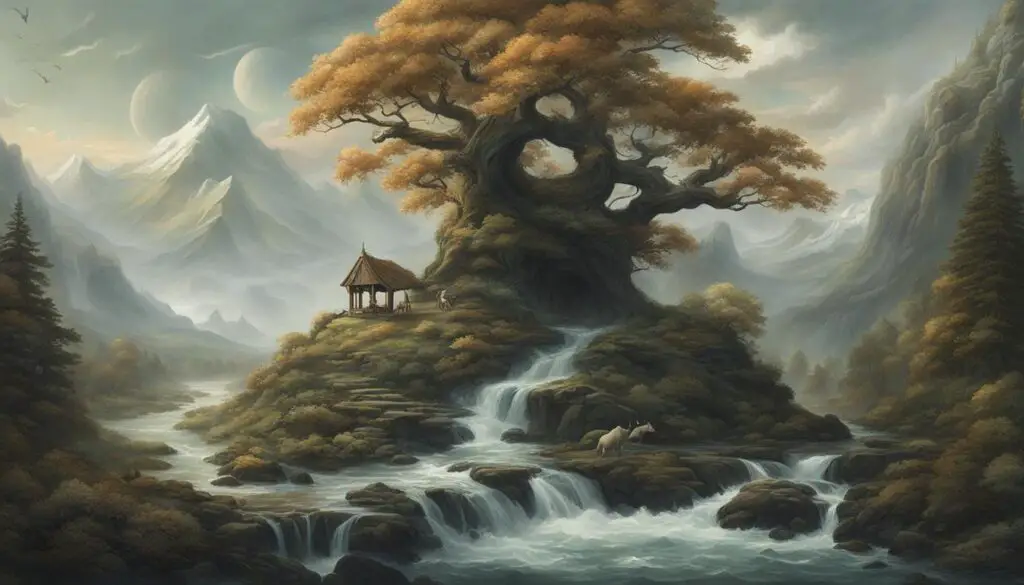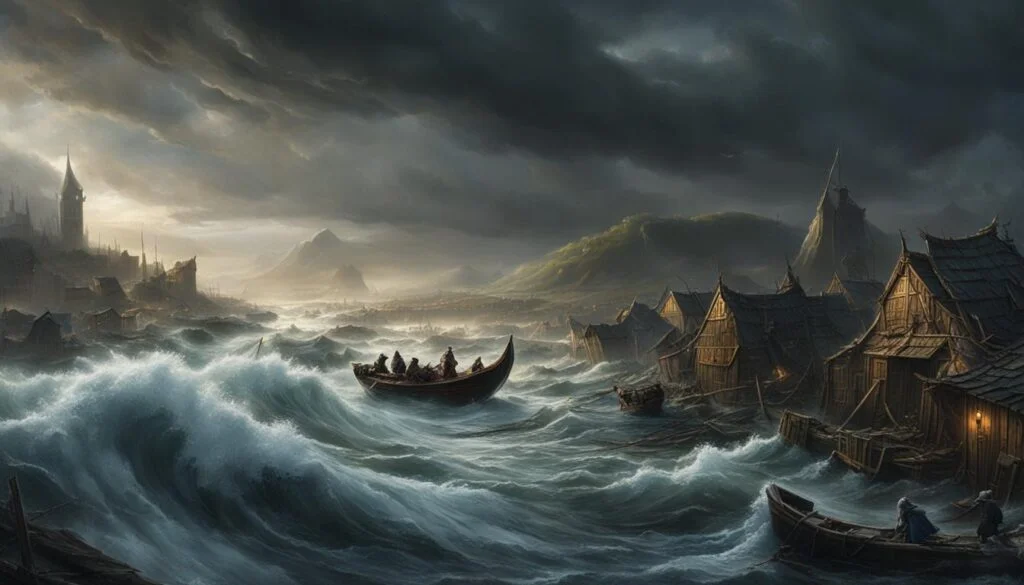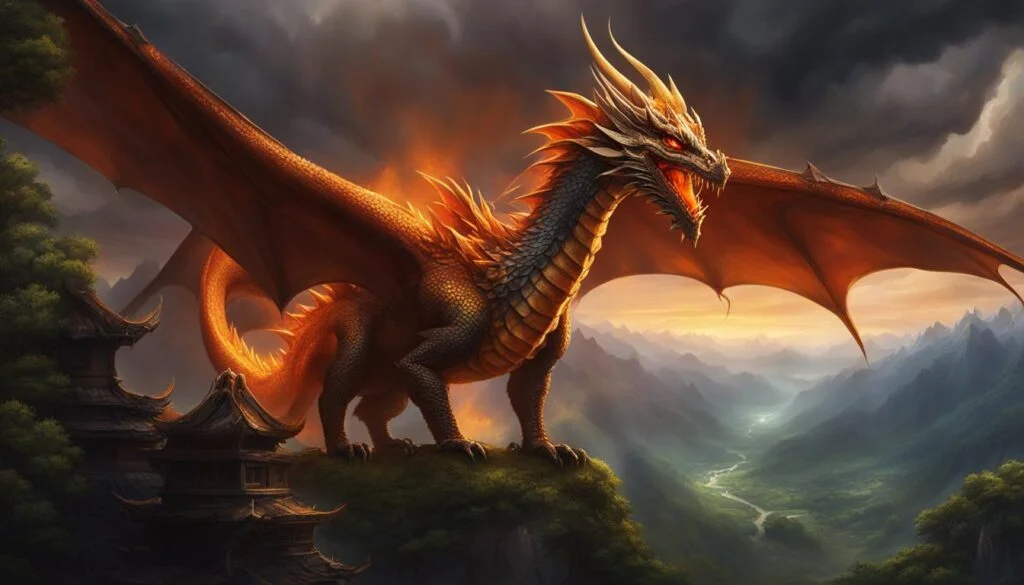Reincarnation is a concept often associated with Eastern religions, but did Norse mythology also believe in the cycle of rebirth? In this article, we will explore the beliefs and afterlife concepts of the ancient Norse, shedding light on the possibility of reincarnation in their mythology.
Key Takeaways:
- Norse mythology is known for its rich and complex beliefs about the afterlife.
- While not explicitly stated, there are hints and references to reincarnation in Norse texts.
- The concept of rebirth is closely tied to the end of the world in Norse mythology, known as Ragnarok.
- Similarities between Norse and Germanic mythologies suggest a shared belief in reincarnation.
- The influence of Christianity on Norse mythology may have influenced the mention of reincarnation.
The End of the World: Ragnarok
Ragnarok, the great battle between gods and giants, is a pivotal event in Norse mythology that signifies the end of the world. This cataclysmic battle between the divine and the monstrous brings about the destruction of heaven and earth, leading to a complete annihilation of the existing world order.
In this epic clash, the gods, led by Odin, Thor, and Loki, confront the formidable giants, including Jormungandr and Fenrir. The giants, representing chaos and destruction, challenge the power of the gods and seek to overthrow their rule.
The battle of Ragnarok is a seismic event of cosmic proportions. It encapsulates the apocalyptic nature of Norse mythology, where the natural forces of creation and destruction converge in a final struggle for dominance. The gods fight valiantly, but despite their best efforts, the world as they know it comes to an end.
However, amidst the chaos and devastation, there is a glimmer of hope. The tale of Ragnarok includes hints of rebirth and renewal. From the ashes of destruction, a new world emerges, rejuvenated and ready to begin anew. This cyclical pattern of death and rebirth is a recurring theme in Norse mythology, reflecting the eternal nature of existence.
The story of Ragnarok serves as a reminder of the transient nature of life and the inevitability of change. The gods and giants, locked in eternal conflict, symbolize the ongoing struggle between order and chaos, creation and destruction.
Ragnarok, with its epic battles and cosmic implications, offers unique insight into the complex belief system of the ancient Norse. It lays the foundation for understanding the concept of reincarnation and the cyclical nature of existence within the rich tapestry of Norse mythology.
Fimbulwinter and the Great Battle
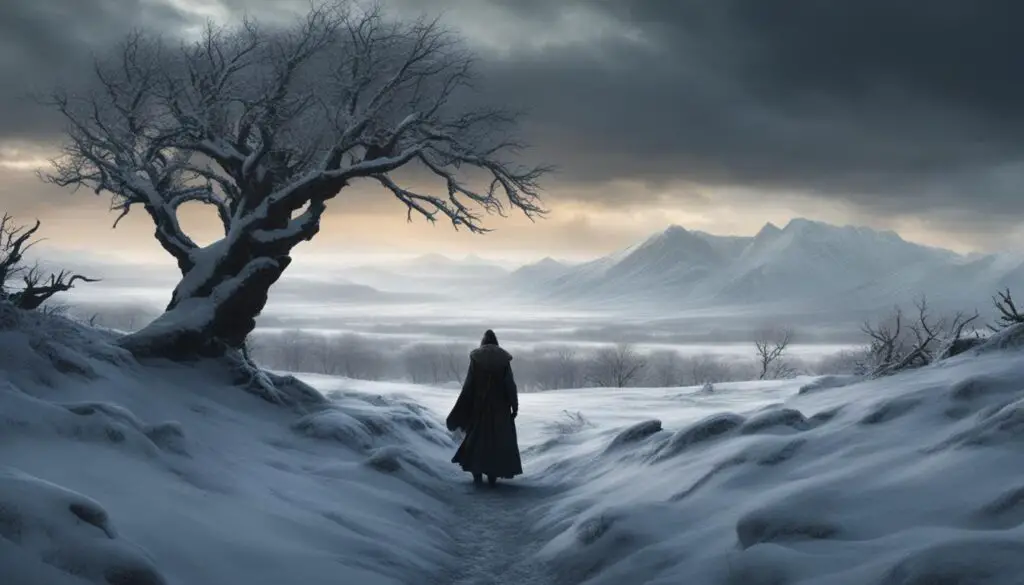
Before Ragnarok, the world experiences a period of harsh winters called Fimbulwinter. This prolonged winter is characterized by bitter cold, snowstorms, and endless darkness, plunging the land into a state of desolation and despair. Fimbulwinter serves as a precursor to the cataclysmic events of Ragnarok, the final battle between the gods and their enemies.
During Fimbulwinter, wars and battles rage across the realms as the forces of chaos and destruction gain momentum. The gods, including Odin, Thor, and Freyr, stand against the giants and other malevolent beings, engaging in fierce clashes that shape the fate of the cosmos. These epic battles claim the lives of many prominent figures in Norse mythology, ushering in a new era of rebirth and renewal.
Amidst the chaos and destruction, the stage is set for the ultimate conflict between the gods and giants that will determine the destiny of the world. The forces of darkness and chaos, led by figures such as Loki and his monstrous offspring, rise to challenge the rule of the gods. The clash between these formidable adversaries culminates in the Great Battle, a showdown of epic proportions that reverberates throughout the nine realms.
As the Great Battle unfolds, the sound of clashing weapons and the cries of warriors fill the air. Heroes and monsters alike engage in fierce combat, each fighting with unwavering determination and valor. The battles are fierce and relentless, leaving a trail of destruction in their wake. The outcome of the Great Battle hangs in the balance, marking a pivotal moment in Norse mythology.
This period of war and chaos serves as the catalyst for the subsequent rebirth of the world. Through the sacrifices and battles fought during Fimbulwinter and the Great Battle, a new cycle of life will emerge. The stage is set for the potential for reincarnation, as the old gives way to the new and the cosmos prepares for its rejuvenation.
As the world emerges from the darkness of Fimbulwinter and the Great Battle, a glimmer of hope arises. The seeds of renewal and rebirth are sown amidst the devastation, laying the foundation for a future filled with potential. The events of Fimbulwinter and the subsequent Great Battle are central to the rich tapestry of Norse mythology, shaping the destiny of the gods and setting the stage for the epic saga that unfolds in Ragnarok.
Rebirth and Reincarnation in Norse Mythology
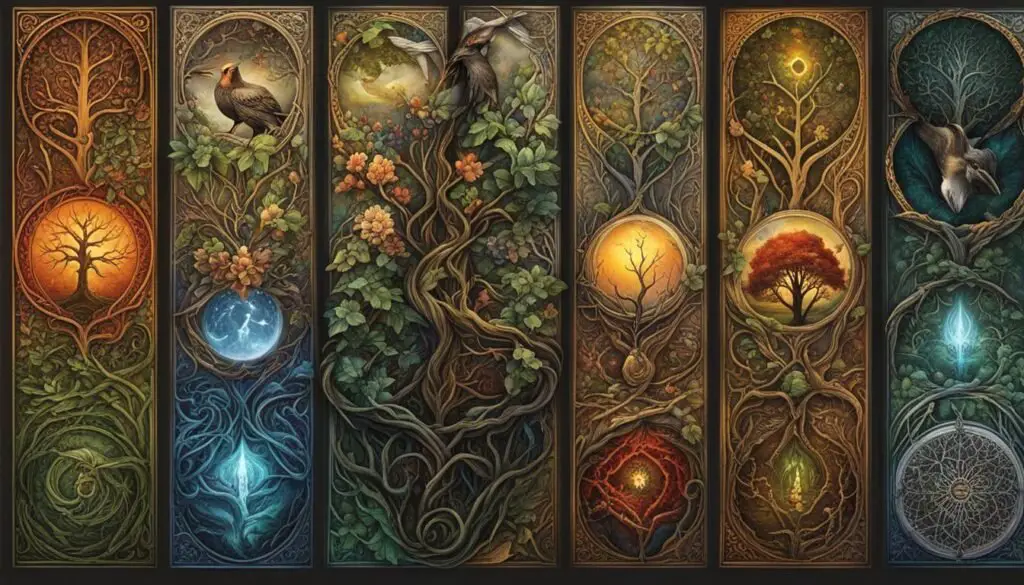
Surprisingly, Norse mythology acknowledges the concept of rebirth and reincarnation, adding depth and complexity to their beliefs about the afterlife. After the devastating events of Ragnarok, which marks the end of the world in Norse mythology, a process of rebirth occurs, resulting in a world that is even more beautiful than before.
One striking instance of resurrection can be found in the story of Baldr, the beloved god of light and beauty. Despite being slain, Baldr is said to be resurrected, hinting at the possibility of reincarnation within Viking religion. This belief in the return of a divine being emphasizes the cycle of life and death, highlighting the significance of rebirth in Norse mythology.
To further explore the concept of reincarnation in Norse mythology, .
It is important to note that the extent and interpretation of these references to reincarnation within Norse mythology are debated among scholars. While some argue that reincarnation was a distinct belief held by ancient Norse societies, others propose that these instances may have been influenced by the arrival of Christianity and its ideas of resurrection.
Rebirth and reincarnation in Norse mythology provide a captivating glimpse into the complex afterlife beliefs of the Viking people. These beliefs shed light on their understanding of the cycle of life and the potential for a renewed existence beyond death.
Rebirth in Germanic Mythology
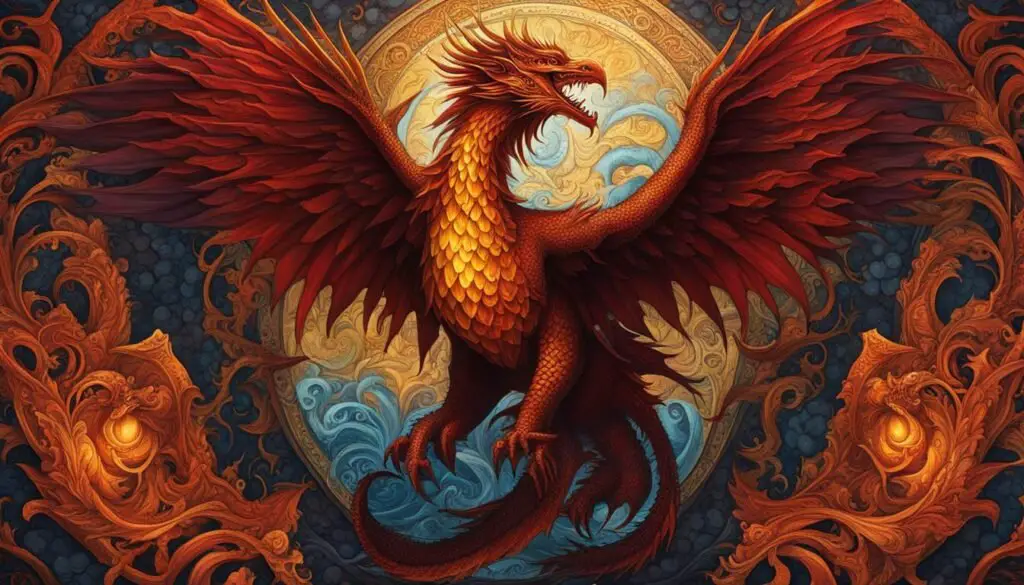
The belief in rebirth goes beyond Norse mythology and can also be found in Germanic mythologies. This connection between Indo-European cultures and their shared belief in reincarnation is intriguing, suggesting a common ancient belief among European societies. Both linguistic and literary evidence provide support for the idea of reincarnation in Germanic mythology.
Indo-European cultures, including Germanic societies, shared linguistic similarities, indicating a potential connection and the possible transmission of beliefs and myths. The belief in reincarnation was likely one such shared belief that transcended borders and influenced various ancient European mythologies.
The concept of rebirth in Germanic mythology can be observed in the cycles of life and death depicted in epic tales and stories. The idea that life continues beyond death and that individuals may be reborn adds depth and richness to these ancient narratives.
Archeological evidence, such as burial practices and grave goods, further supports the existence of a belief in rebirth and an afterlife in Germanic cultures.
Other Mentions of Reincarnation in Norse Mythology
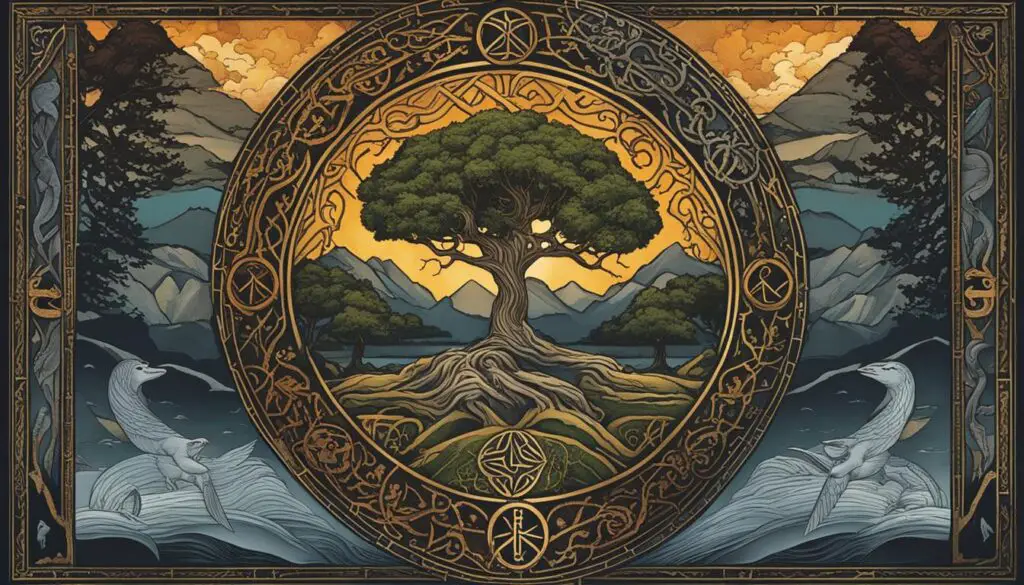
While the exact extent of belief in reincarnation in Norse mythology is debated, there are other mentions and hints of this concept within Norse texts. The references to the rebirth of Baldr and the idea of men being reborn through their male offspring allude to the possibility of reincarnation within Norse belief systems.
This notion of rebirth is exemplified in the story of Baldr, the beloved god who is slain but foretold to be resurrected after Ragnarok, the end of the world in Norse mythology. Baldr’s return suggests a cyclical nature of life and the potential for reincarnation in the Norse view of the afterlife.
Additionally, there are references to men being reborn through their male offspring, further hinting at the concept of reincarnation within Norse mythology. This belief suggests the continuation of life through generations and the possibility of souls experiencing multiple lifetimes.
While these mentions of reincarnation in Norse mythology may be less direct than in other belief systems, they provide intriguing glimpses into the Norse view on life after death. The exact nature and significance of these references continue to be a subject of discussion among mythologists and scholars.
Reincarnation or Christian Influence?
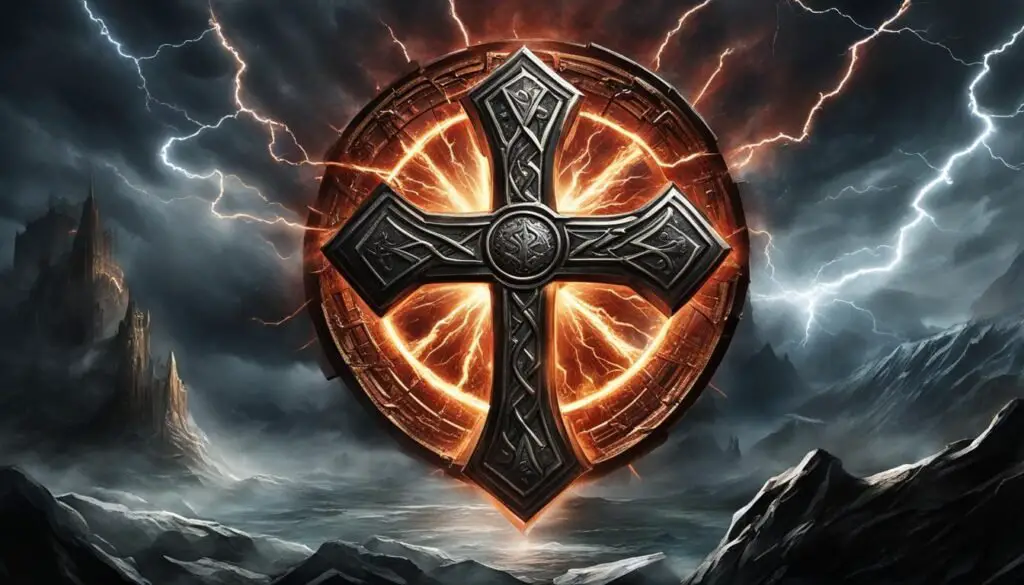
Some scholars speculate that the mentions of reincarnation in Norse mythology may have been influenced by the arrival of Christianity in Iceland and the subsequent conversion of the Norse people to this new faith. It is believed that the parallels drawn between the resurrection of Jesus Christ and the rebirth of Baldr raise questions about the authenticity of the belief in reincarnation in Norse mythology.
The influence of Christianity on Norse mythology cannot be overlooked. With the spread of Christianity, many Norse myths underwent reinterpretation and adaptation to fit within the framework of the new religion. As a result, the original beliefs and concepts of Norse mythology may have been altered, including the understanding of the afterlife and the possibility of reincarnation.
One noteworthy parallel between Christian and Norse beliefs is the resurrection of Jesus Christ and the rebirth of Baldr. In Christianity, Jesus died and was resurrected, signifying a triumph over death and the promise of eternal life. Similarly, Baldr, the Norse god of light and innocence, is said to be resurrected after his death, symbolizing the cycle of life and renewal.
Despite these similarities, it is important to approach the topic with caution. Norse mythology existed long before the arrival of Christianity, and the belief in reincarnation may have predated the influence of the new faith. Additionally, the connections between Jesus and Baldr may be purely coincidental, with each deity representing different aspects within their respective mythologies.
Furthermore, Norse mythology is complex and diverse, with various interpretations and regional variations. The belief in reincarnation may have been present in certain Norse communities and absent in others. As such, it is challenging to determine the extent of Christian influence on the belief in reincarnation throughout Norse mythology.
In conclusion, the influence of Christianity on Norse mythology and the belief in reincarnation is a topic of ongoing debate among scholars. While similarities between Christian and Norse beliefs exist, further research and analysis are needed to fully understand the extent of Christian influence and its impact on the depiction of reincarnation in Norse mythology.
Reincarnation in Proto-Indo-European Beliefs
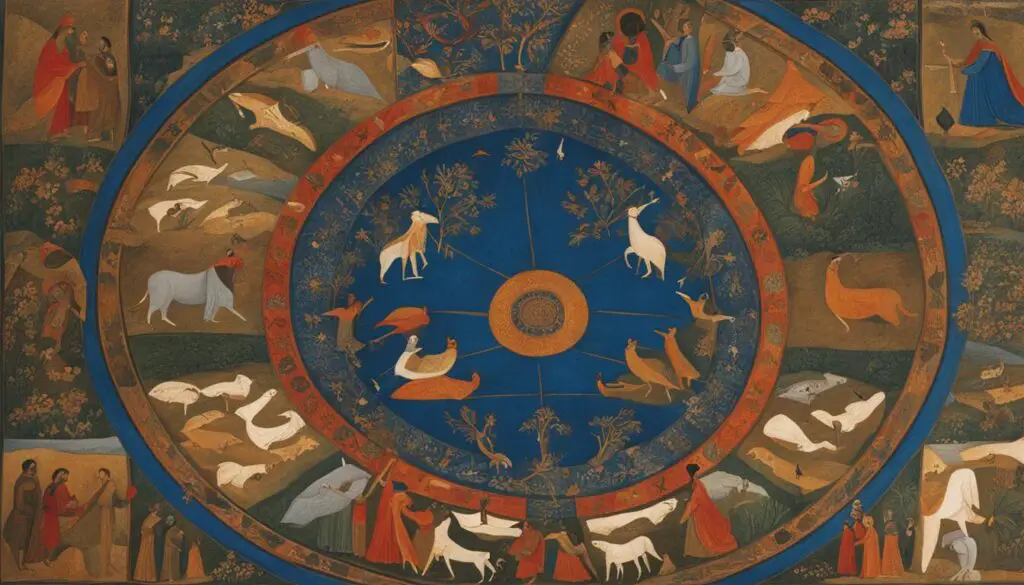
The presence of reincarnation in both Norse and Germanic mythologies suggests that this belief might have originated from the Proto-Indo-European cultures. To gain a deeper understanding of the widespread belief in reincarnation among these cultures, it is important to compare it with other Indo-European mythologies and legends.
Proto-Indo-European beliefs form the foundation of many ancient European mythologies, including Norse and Germanic mythologies. By examining the similarities between these mythologies, we can uncover valuable insights into the ancient beliefs regarding reincarnation.
Comparative analysis of linguistic and literary evidence provides us with a glimpse into the shared concepts and themes across Indo-European mythologies. The parallels in mythology, deities, and narratives suggest a common cultural heritage and the possibility of shared beliefs.
Similarities between Indo-European Mythologies
- Concept of cyclical time: Many Indo-European mythologies depict time as cyclical and emphasize the repetitive nature of existence. This cyclical view aligns well with the idea of reincarnation, where life is seen as an ongoing process of birth, death, and rebirth.
- Dualistic worldview: Indo-European mythologies often present a dualistic worldview, dividing the universe into opposing forces such as light and dark, good and evil, or order and chaos. This dualism can reflect the belief in the continuous struggle between life and death, with the possibility of rebirth providing hope and balance.
- Symbolism of animals: Animals frequently serve as powerful symbols in Indo-European mythologies, representing various aspects of life and the afterlife. This symbolism can be interpreted as a reflection of the interconnectedness between animals, humans, and the cycle of life, death, and rebirth.
- Divine figures associated with the afterlife: Many Indo-European mythologies feature gods or goddesses associated with the afterlife or the realm of the dead. These figures often play a role in escorting souls to their next existence or judging their actions in previous lives.
By exploring the similarities between Indo-European mythologies and their treatment of reincarnation, we can deepen our understanding of the cultural and religious beliefs of ancient European societies.
The Complexity of Norse Afterlife Beliefs
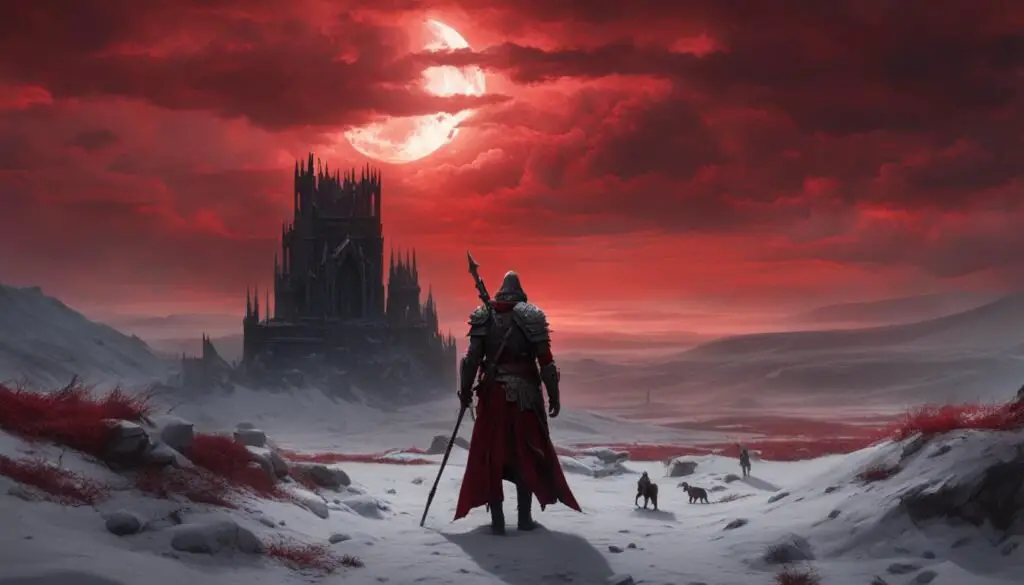
Norse afterlife beliefs are intricate and diverse, offering a multitude of destinations for souls after death. Let’s delve into the rich tapestry of Norse mythology and explore the various realms that Nordic souls may find themselves in.
Valhalla
One of the most renowned destinations in Norse mythology is Valhalla, the great hall of fallen heroes. Valhalla is ruled by the mighty god Odin, where brave warriors who die in battle are chosen to reside. These warriors, known as einherjar, engage in eternal feasting and preparation for the ultimate battle of Ragnarok.
Folkvangr
Associated with the goddess Freyja, Folkvangr is another afterlife realm in Norse mythology. Similar to Valhalla, Folkvangr is a place where warriors go after death. However, whereas Odin selects the fallen warriors for Valhalla, Freyja chooses half of all slain warriors to join her in Folkvangr.
Hel
Hel is the realm of the dead in Norse mythology, ruled by the goddess Hel herself. It is a somber place where those who did not die in battle, as well as those who died of old age or illness, go to reside. Hel is neither a place of punishment nor pleasure, but rather a neutral realm where the souls of the departed exist in a state of relative peace.
The Realm of Rán
Rán, the goddess of the sea, rules over a distinct afterlife realm closely associated with drowning and sea-related deaths. In this watery realm, souls find their eternal abode, forever part of the mysterious depths of the ocean.
The Burial Mound
In addition to these known afterlife realms, Norse mythology also acknowledges the concept of the burial mound as a place where the souls of the deceased may reside. These mounds, marked by elaborate burial rituals and monuments, are seen as a connection between the living and the dead.
The complex nature of Norse afterlife beliefs includes not only the destinations for souls but also the intricate understanding of the soul itself. The Norse concept of the soul encompasses different aspects, such as the physical appearance (hamr), the personality (hugr), the totem or familiar spirit (fylgja), and inherent success (hamingja). These aspects contribute to the diverse understanding and interpretation of the afterlife in Norse mythology.
The image above provides a visual representation of the multifaceted and enchanting world of Norse afterlife beliefs.
Conclusion
In summary, Norse mythology offers intriguing glimpses into the concept of reincarnation. While there are references and hints of this belief in Norse texts, its exact extent and significance within the mythology remain open to interpretation. The presence of reincarnation in Germanic mythologies suggests a broader Indo-European connection, highlighting the potential shared belief in the cycle of rebirth among ancient European cultures.
However, the influence of Christian beliefs on Norse mythology cannot be ignored. The resurrection of Baldr, reminiscent of the resurrection of Jesus Christ, raises questions about the authenticity of the belief in reincarnation. The complex Norse afterlife beliefs, with different destinations for souls after death, further contribute to the diversity of views on the concept of life after death in Norse mythology.
To gain a deeper understanding of the role of reincarnation in Norse mythology, further research and comparative analysis with other Indo-European mythologies are necessary. Such studies can shed light on the origins and development of the belief in reincarnation, as well as its significance within the larger context of Norse cosmology and religious beliefs. By exploring these connections, we can unravel the intricate tapestry of Norse mythology and deepen our understanding of ancient Norse worldview.
FAQ
Did Norse mythology believe in reincarnation?
Norse mythology contains references and hints of reincarnation, but the extent of this belief and its significance is subject to interpretation.
What role does Ragnarok play in understanding reincarnation in Norse mythology?
Ragnarok, the great battle between gods and giants that marks the end of the world, sets the stage for the rebirth of the world and the potential for reincarnation.
What is Fimbulwinter and how does it relate to reincarnation?
Fimbulwinter is a period of harsh winters characterized by wars and destruction, leading up to Ragnarok. These events contribute to the cycle of death and rebirth in Norse mythology.
Are there mentions of rebirth and reincarnation in Norse mythology?
Yes, after Ragnarok, the world is reborn, and figures like Baldr, the slain god, are said to be resurrected, suggesting belief in reincarnation within Norse mythology.
Did Germanic mythology also believe in rebirth and reincarnation?
Yes, the belief in rebirth extends to Germanic mythologies, indicating a shared belief among ancient European societies and potentially inherited from the Proto-Indo-Europeans.
What other mentions of reincarnation can be found in Norse mythology?
Norse texts allude to the rebirth of Baldr and the idea of men being reborn through their male offspring, hinting at the possibility of reincarnation within Norse belief systems.
Were the mentions of reincarnation influenced by the arrival of Christianity in Iceland?
Some scholars argue that the parallels between the resurrection of Jesus Christ and the rebirth of Baldr raise questions about the authenticity of the belief in reincarnation in Norse mythology.
What is the connection between reincarnation in Norse mythology and Proto-Indo-European beliefs?
The presence of reincarnation in Norse and other Indo-European mythologies suggests a shared belief system inherited from the Proto-Indo-Europeans, but further research is needed.
What are the beliefs about the afterlife in Norse mythology?
Norse afterlife beliefs are complex and varied, with multiple destinations for souls after death, including Valhalla, Folkvangr, Hel, the realm of Rán, and the burial mound.
What is the conclusion regarding reincarnation in Norse mythology?
The extent and true significance of the belief in reincarnation in Norse mythology remain subject to interpretation and require further research and comparison with other mythologies.


